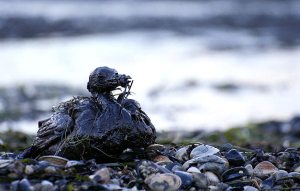U.S. Feds: Airport Scanners DO Store Naked Body Images
August 5, 2010 1 Comment
TSA requires all airport body scanners it purchases to be able to store and transmit images for “testing, training, and evaluation purposes.”
CNET
For the last few years, federal agencies have defended body scanning by insisting that all images will be discarded as soon as they’re viewed. The Transportation Security Administration claimed last summer, for instance, that “scanned images cannot be stored or recorded.”
Now it turns out that some police agencies are storing the controversial images after all. The U.S. Marshals Service admitted this week that it had surreptitiously saved tens of thousands of images recorded with a millimeter wave system at the security checkpoint of a single Florida courthouse.
This follows an earlier disclosure (PDF) by the TSA that it requires all airport body scanners it purchases to be able to store and transmit images for “testing, training, and evaluation purposes.” The agency says, however, that those capabilities are not normally activated when the devices are installed at airports.
Body scanners penetrate clothing to provide a highly detailed image so accurate that critics have likened it to a virtual strip search. Technologies vary, with millimeter wave systems capturing fuzzier images, and backscatter X-ray machines able to show precise anatomical detail. The U.S. government likes the idea because body scanners can detect concealed weapons better than traditional magnetometers.
This privacy debate, which has been simmering since the days of the Bush administration, came to a boil two weeks ago when Homeland Security Secretary Janet Napolitano announced that scanners would soon appear at virtually every major airport. The updated list includes airports in New York City, Dallas, Washington, Miami, San Francisco, Seattle, and Philadelphia.
The Electronic Privacy Information Center, a Washington, D.C.-based advocacy group, has filed a lawsuit asking a federal judge to grant an immediate injunction pulling the plug on TSA’s body scanning program. In a separate lawsuit, EPIC obtained a letter (PDF) from the Marshals Service, part of the Justice Department, and released it on Tuesday afternoon.
These “devices are designed and deployed in a way that allows the images to be routinely stored and recorded, which is exactly what the Marshals Service is doing,” EPIC executive director Marc Rotenberg told CNET. “We think it’s significant.”
William Bordley, an associate general counsel with the Marshals Service, acknowledged in the letter that “approximately 35,314 images…have been stored on the Brijot Gen2 machine” used in the Orlando, Fla. federal courthouse. In addition, Bordley wrote, a Millivision machine was tested in the Washington, D.C. federal courthouse but it was sent back to the manufacturer, which now apparently possesses the image database.
The Gen 2 machine, manufactured by Brijot of Lake Mary, Fla., uses a millimeter wave radiometer and accompanying video camera to store up to 40,000 images and records. Brijot boasts that it can even be operated remotely: “The Gen 2 detection engine capability eliminates the need for constant user observation and local operation for effective monitoring. Using our APIs, instantly connect to your units from a remote location via the Brijot Client interface.”
This trickle of disclosures about the true capabilities of body scanners–and how they’re being used in practice–is probably what alarms privacy advocates more than anything else.
A 70-page document (PDF) showing the TSA’s procurement specifications, classified as “sensitive security information,” says that in some modes the scanner must “allow exporting of image data in real time” and provide a mechanism for “high-speed transfer of image data” over the network. (It also says that image filters will “protect the identity, modesty, and privacy of the passenger.”)
“TSA is not being straightforward with the public about the capabilities of these devices,” Rotenberg said. “This is the Department of Homeland Security subjecting every U.S. traveler to an intrusive search that can be recorded without any suspicion–I think it’s outrageous.” EPIC’s lawsuit says that the TSA should have announced formal regulations, and argues that the body scanners violate the Fourth Amendment, which prohibits “unreasonable” searches.
TSA spokeswoman Sari Koshetz told CNET on Wednesday that the agency’s scanners are delivered to airports with the image recording functions turned off. “We’re not recording them,” she said. “I’m reiterating that to the public. We are not ever activating those capabilities at the airport.”
The TSA maintains that body scanning is perfectly constitutional: “The program is designed to respect individual sensibilities regarding privacy, modesty and personal autonomy to the maximum extent possible, while still performing its crucial function of protecting all members of the public from potentially catastrophic events.”


 la el Departamento de Protección del Medio Ambiente de Florida, que la Casa Blanca y British Petroleum (BP), que donó 71.000 dólares en el 2008 a la campaña presidencial de Barack Obama - más de John McCain o Hillary Clinton-, están encubriendo la magnitud de la catástrofe del petróleo en el Golfo de México y trabajan juntos para limitar la responsabilidad de BP por daños causados por lo que puede llamarse un “mega-desastre”.
la el Departamento de Protección del Medio Ambiente de Florida, que la Casa Blanca y British Petroleum (BP), que donó 71.000 dólares en el 2008 a la campaña presidencial de Barack Obama - más de John McCain o Hillary Clinton-, están encubriendo la magnitud de la catástrofe del petróleo en el Golfo de México y trabajan juntos para limitar la responsabilidad de BP por daños causados por lo que puede llamarse un “mega-desastre”. and Florida Department of Environmental Protection that the Obama White House and British Petroleum (BP), which pumped $71,000 into Barack Obama’s 2008 presidential campaign — more than John McCain or Hillary Clinton–, are covering up the magnitude of the volcanic-level oil disaster in the Gulf of Mexico and working together to limit BP’s liability for damage caused by what can be called a “mega-disaster.”
and Florida Department of Environmental Protection that the Obama White House and British Petroleum (BP), which pumped $71,000 into Barack Obama’s 2008 presidential campaign — more than John McCain or Hillary Clinton–, are covering up the magnitude of the volcanic-level oil disaster in the Gulf of Mexico and working together to limit BP’s liability for damage caused by what can be called a “mega-disaster.”